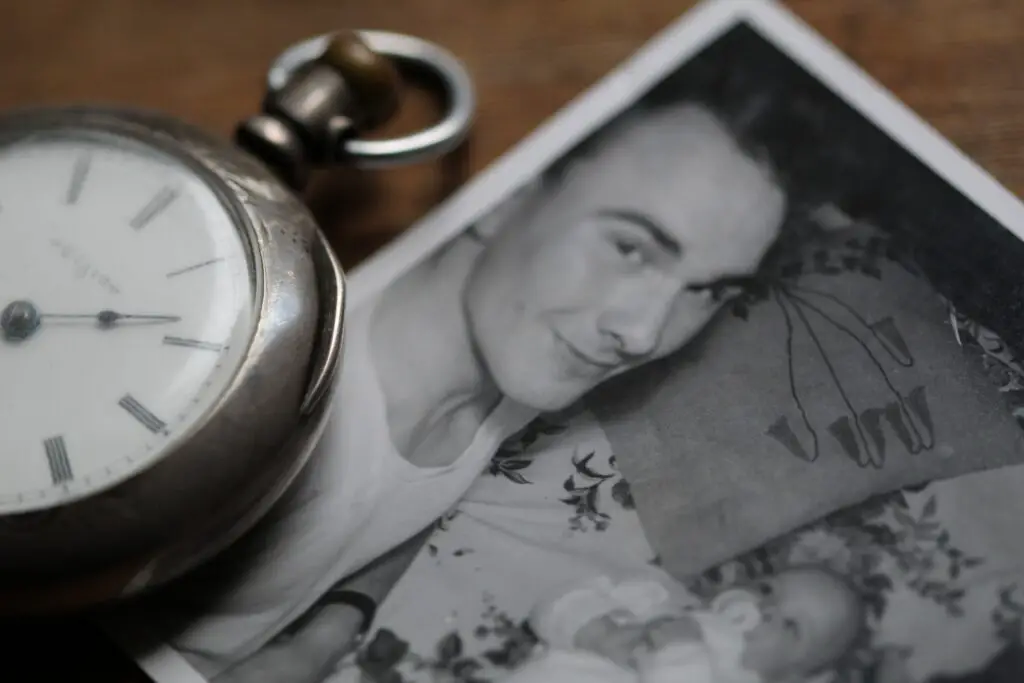Imagine unlocking a treasure chest, not of gold or jewels, but of memories and moments that weave the rich tapestry of your family history.
In the age of digital renaissance, where every moment is captured and stored in pixels and bytes, the quest to discover our ancestry and genealogy has found an unlikely ally – family videos.
Yes, those grainy Christmas mornings, the slightly out-of-focus birthday parties, and the shaky camera footage of family picnics are more than just nostalgia; they’re keys to unlocking our past.
Learning about one’s ancestry and genealogy isn’t just about filling in a family tree with names and dates; it’s about connecting with the stories, struggles, and triumphs of those who came before us.
And what better medium than family videos, which capture not just images but the essence of the moments they record?
Ready to dive into the past and see where you come from through the lens of a camcorder? Let’s explore how family videos can be your gateway to discovering your ancestry and genealogy, and bring the faces and voices of your ancestors into the present.
Camera ready? Roll ‘em…
The Value of Family Videos in Genealogical Research
Ever watched a video and felt like you were transported back in time?
That’s the magic of family videos. They’re time machines that allow us to witness moments that, though long past, are a vital part of who we are today. But it’s more than just the emotional tug at our heartstrings when we see relatives who’ve passed on or places that have changed.
These videos are gold mines for genealogical research, and here’s why:
- Emotional Connection: There’s something profoundly moving about seeing your ancestors in motion, isn’t there? It’s one thing to know your great-grandparents’ names from a family tree; it’s another to see them laughing, dancing, and living. This emotional connection can ignite a passion for digging deeper into your family’s history, driving your genealogical journey forward.
- Visual Aid: Imagine spotting a family resemblance in the curve of a smile or the tilt of a head, or noticing a great-grandmother holding a book that hints at a love for literature you thought was unique to you. Family videos offer these visual cues, linking the past and present in a continuous narrative.
Getting Started with Family Videos for Genealogy
Gathering Family Videos
Embarking on this quest can feel like detective work — exciting, yet overwhelming.
But fear not, for the first step is simply gathering your clues. Family videos are spread across various mediums, from the dusty VHS tapes in your attic to digital clips forgotten in a distant relative’s social media feed. Start by reaching out to family members.
You’d be surprised how many have snippets of the past tucked away in their phones or shoeboxes.
Then there’s the Herculean task of digitizing these treasures. Old formats are not just difficult to play but are deteriorating each day. Services are available that can convert these into digital formats, preserving your family history from the relentless march of time.
Organizing and Cataloging
Got your videos? Great!
Now comes the part where a little bit of organization can save you a mountain of hassle later. Think about creating a system that works for you. Some prefer organizing videos by date or event, while others might find it more useful to sort them by the individuals featured.
And let’s not forget tagging. With the right software, you can tag individuals, places, and even specific moments within videos, making it easier to find that needle in the haystack later on. Software like Adobe Lightroom or dedicated genealogy programs offer these tagging capabilities and can act as a virtual archive for your video and photo collections.
Moreover, cataloging isn’t just about making things easier to find; it’s about creating a structured narrative of your family’s history. By meticulously labeling and sorting, you’re essentially writing the chapters of your family’s story, making it accessible for future generations to learn from and enjoy.
Remember, the goal isn’t just preservation but also accessibility. Ensuring everything is well-organized means that when a specific question about your ancestry arises, you’re just a few clicks away from an answer that might unlock new discoveries about your family’s past.
Analyzing Family Videos for Genealogical Clues
Once you’ve gathered and organized your family videos, the real detective work begins. Analyzing these videos for genealogical clues can be akin to piecing together a puzzle. Each piece, no matter how small, can help complete the bigger picture of your family’s history. Here’s how to go about it:
Identifying People and Places
First things first, identify who’s who and where’s where. This might seem straightforward but can get tricky with older generations. If you’re unsure, ask around the family. You’d be surprised at the stories and details that can unfold from a simple question.
And don’t overlook the background — the house, the car in the driveway, the landscape. These can provide clues about the place and time, offering context to your family’s story.
For instance, maybe there’s a video of a family gathering with a distinctive mountain range in the background. Turns out, it’s the same range near where your great-grandparents lived, pinpointing a location and date range for your research.
Listening for Stories and Names
Videos are more than visual; they’re auditory gold mines. Listen closely to the conversations, the stories being told, the names mentioned. These can offer hints about relationships, events, and even family secrets that haven’t been documented anywhere else. It’s like having a front-row seat to history, with your ancestors themselves as the narrators.
Picture this: In the background of a birthday party, you overhear your great-aunt mentioning her grandmother’s migration journey, a piece of family history you’ve never heard before. Armed with this new information, you can now explore immigration records, passenger lists, and more to uncover further details about your ancestry.
Exploring Cultural and Social Contexts
Diving deep into family videos isn’t just about identifying faces or catching snippets of conversation; it’s also a unique window into the cultural and social contexts of your ancestors’ times.
These videos hold the power to show you the world as they experienced it, complete with the social norms, cultural practices, and even the daily challenges of their era.
Imagine discovering a video of a family wedding from several decades ago, showcasing traditional attire, music, and rituals that might have been lost to time. Or a casual family gathering that reveals the stark differences in societal norms compared to today. These are not just intriguing insights; they’re invaluable pieces of the puzzle in understanding where, and more importantly, how, our ancestors lived.
The backdrop of these videos often tells tales of its own — from the cars lining the streets, the posters on the walls, to the way people interacted with each other and their environment. Each detail adds a layer to the story of your family, providing a richer, fuller understanding of your roots.
Preserving and Sharing Your Discoveries
Creating a Digital Archive
Once you’ve journeyed through your collection of family videos, extracting clues and piecing together narratives, the next critical step is preservation.
The goal?
To ensure that these memories and discoveries transcend time, creating a digital archive becomes imperative. Digital preservation not just safeguards these treasures against physical deterioration but also makes them infinitely easier to share and study.
Start by converting all physical media into digital formats, if you haven’t already. Once digitized, organize these files using a systematic naming convention that could include the date, event, and the people featured. Utilizing cloud storage or external hard drives can protect against data loss, ensuring your digital archive stands the test of time.
Remember, the essence of preservation is not just to store but to maintain accessibility for future generations. As such, ensuring your digital archive is navigable with clearly labeled folders and comprehensive metadata is key.
Sharing with Family and the Genealogical Community
What’s the joy of discovery if you can’t share it? Once your archive is up and running, invite family members to dive into these recorded memories. Sharing these videos can evoke collective nostalgia, spark conversations, and even lead to the correction or addition of information to your genealogical research.
But don’t stop with your immediate circle. The genealogical community is vast and invariably supportive. Through forums, social media groups, and genealogy websites, sharing your findings can not only enrich your own knowledge but also help others on their journey of discovery. Who knows, your shared video might just be the missing piece in someone else’s ancestral puzzle.
Moreover, collaborative platforms allow for the exchange of techniques, stories, and advice, furthering the collective understanding of our pasts. It’s a beautiful cycle of discovery, preservation, and sharing that enriches our connection to history and to each other.
Overcoming Common Challenges
Venturing into the world of video genealogy is not without its hurdles. Poor video quality, unlabelled tapes, and indecipherable conversations can pose significant challenges. However, with a dash of creativity and patience, these obstacles can often be overcome.
For videos plagued by poor quality, various software tools offer restoration features that can enhance clarity and reduce noise. While not perfect, these improvements can make critical details more distinguishable.
When faced with unlabelled tapes, lean into contextual clues within the videos themselves or consult family members to piece together the when and where. It’s a bit like being a detective, using every available resource to solve the mystery.
And for those hard-to-interpret conversations or mentions, don’t underestimate the power of crowd-sourcing. Sharing snippets on genealogical forums can bring fresh perspectives and possibly answers from unexpected quarters.
Conclusion
Using family videos to uncover your ancestry and genealogy is like setting sail across a vast ocean of memories. It’s a voyage that promises not only a deeper understanding of your roots but also a profound connection to your past.
These videos, with their flickers of laughter, whispered conversations, and quiet moments, are more than just moving images; they are vibrant threads woven into the fabric of our familial tapestry.
As you delve into this endeavor, remember that each discovery, no matter how small, is a piece of the puzzle that is your heritage. The roads traveled by our ancestors, the lives they led, and the stories they hold are waiting to be uncovered and preserved. And in doing so, we not only honor their memories but also enrich our sense of identity and belonging.
So, take up the mantle, be it out of curiosity, for the love of history, or the desire to connect with your past. The journey may be dotted with challenges, but the rewards—understanding, connection, and the preservation of your family’s legacy—are immeasurable.
Your ancestors’ stories are calling. It’s time to listen, discover, and share. After all, we are custodians of our ancestors’ legacies.

If you enjoyed this article on family history, or think we left out anything important, please leave us a comment below! We would love to hear from you!



